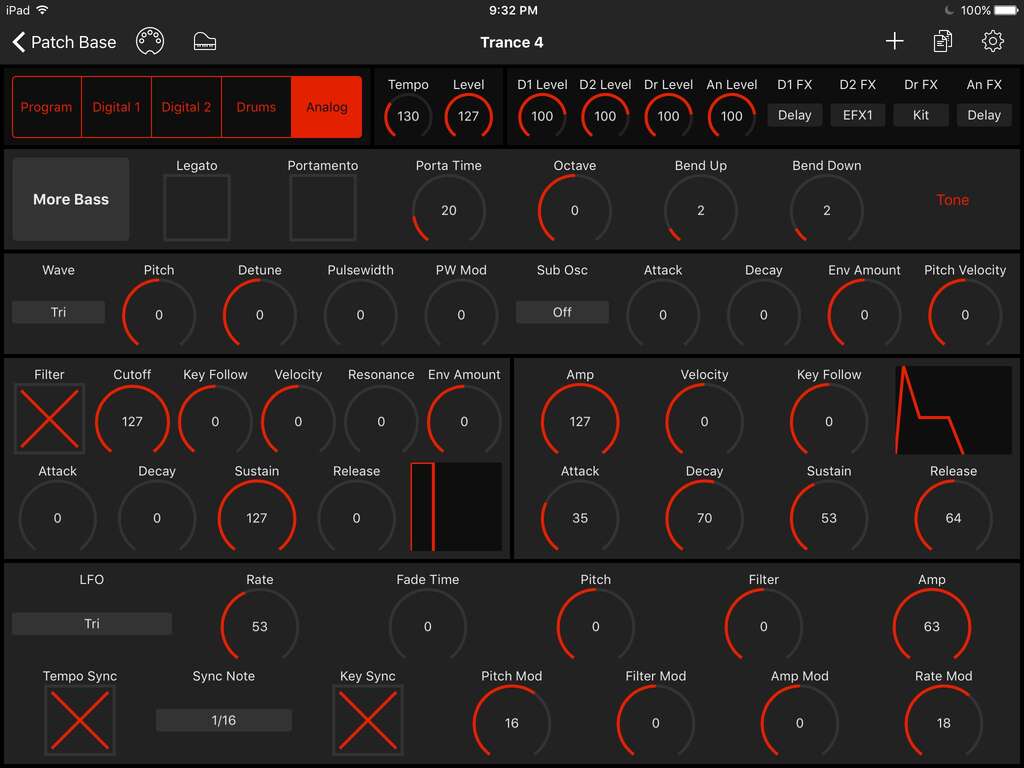Roland JD-Xi Editor Added in Patch Base 2.4
by Chadwick Wood
February 3rd, 2017
The latest update to Patch Base adds a fully-featured program/patch editor for the Roland JD-Xi, bringing the number of supported synths in Patch Base to 30! This new editor is the most complex yet in the Patch Base collection, including support for the JD-Xi's 2 digital synths, analog monosynth, sample-based drum machine, and on-board effects and mixing. And, for the next several days, the In-App Purchase for the JD-Xi editor is 50% off!
The hundreds of parameters that the JD-Xi uses are all here, allowing for a sound design experience far beyond what's available using the JD-Xi's built-in controls (unless you enjoy hours of menu diving!). All of this control is achieved via a 5-page layout for the editor. In addition to the individual controls, many aspects of your patches can be copied, pasted, and randomized. And as always, Patch Base allows you to store and organize these sounds on your iPad for later use, backup, and sharing.
Program Page
The Program page gives access to all of the effects on the JD-Xi, such as Bit Crusher, Flanger, Delay, and Reverb. The amount of effects applied to each synth part can be controlled here. This page also gives access to the Vocoder and Auto Pitch features of the JD-Xi.

Digital Synth Page
The editor has 2 Digital Synth pages, one for each in the JD-Xi. Each synth patch can have up to 3 separate Partials, which is like having 3 separate synth sounds stacked on top of each other. Each Partial has its own oscillator, filter, amplitude envelope, and LFO.

Drums Page
Here you have access to the drum machine, with 36 different sounds that can be set up at once. And, each individual drum sound can combine up to 4 samples! Each drum sound has its own filter, pitch controls, and amp envelope, and can be individually assigned to different effects. There's lots more that can be done here as well, as the screenshot shows.

Analog Page
Finally, the Analog page gives access to the JD-Xi's analog synth. The controls are here for the oscillator (and sub-oscillator), filter, amp, and LFO.

